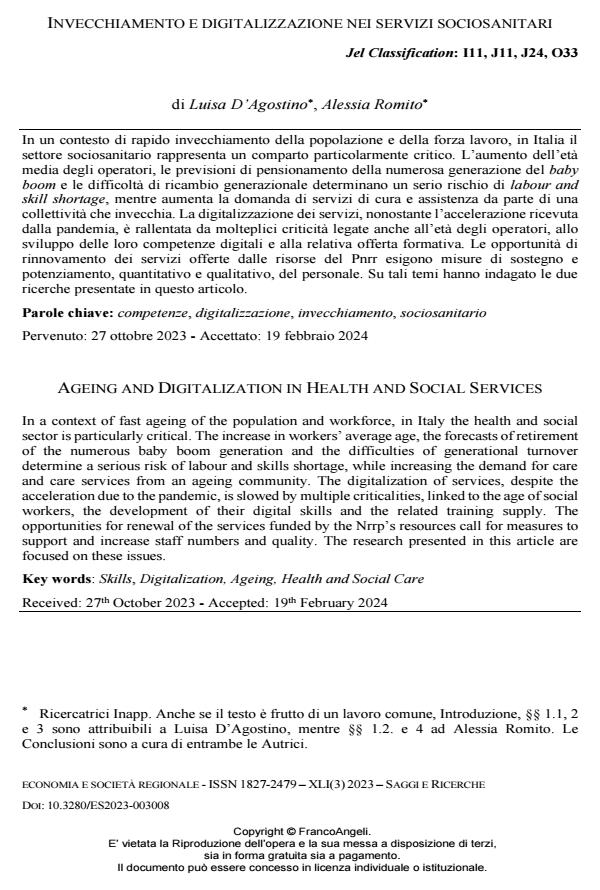Ageing and digitalization in health and social services
Journal title ECONOMIA E SOCIETÀ REGIONALE
Author/s Luisa D’Agostino, Alessia Romito
Publishing Year 2024 Issue 2023/3
Language Italian Pages 32 P. 119-150 File size 504 KB
DOI 10.3280/ES2023-003008
DOI is like a bar code for intellectual property: to have more infomation
click here
Below, you can see the article first page
If you want to buy this article in PDF format, you can do it, following the instructions to buy download credits

FrancoAngeli is member of Publishers International Linking Association, Inc (PILA), a not-for-profit association which run the CrossRef service enabling links to and from online scholarly content.
In a context of fast ageing of the population and workforce, in Italy the health and social sector is particularly critical. The increase in workers’ average age, the forecasts of retirement of the numerous baby boom generation and the difficulties of generational turnover determine a serious risk of labour and skills shortage, while increasing the demand for care and care services from an ageing community. The digitalization of services, despite the acceleration due to the pandemic, is slowed by multiple criticalities, linked to the age of social workers, the development of their digital skills and the related training supply. The opportunities for renewal of the services funded by the Nrrp’s resources call for measures to support and increase staff numbers and quality. The research presented in this article are focused on these issues.
Keywords: Skills, Digitalization, Ageing, Health and Social Care
Jel codes: I11, J11, J24, O33
Luisa D’Agostino, Alessia Romito, Invecchiamento e digitalizzazione nei servizi sociosanitari in "ECONOMIA E SOCIETÀ REGIONALE " 3/2023, pp 119-150, DOI: 10.3280/ES2023-003008